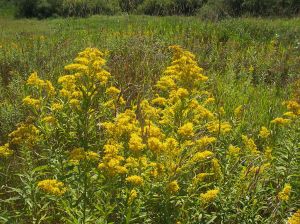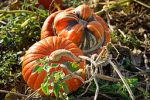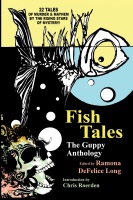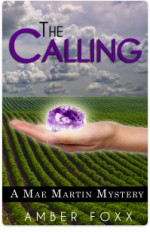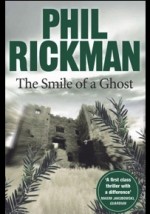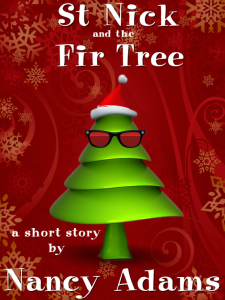 Today I am presenting an interview of one of my own characters. The Fir Tree first made an appearance several years ago in the short story “Saint Nick and the Fir Tree,” and has been hanging around the corners of my mind ever since, angling for a sequel. Though that remains so far unwritten, I thought I would appease the Tree by inviting it to come to the blog for a seasonal interview. Leave a comment before midnight Dec. 18 EST and you’ll be in the running for a “Saint Nick” giveaway book.
Today I am presenting an interview of one of my own characters. The Fir Tree first made an appearance several years ago in the short story “Saint Nick and the Fir Tree,” and has been hanging around the corners of my mind ever since, angling for a sequel. Though that remains so far unwritten, I thought I would appease the Tree by inviting it to come to the blog for a seasonal interview. Leave a comment before midnight Dec. 18 EST and you’ll be in the running for a “Saint Nick” giveaway book.
(For reasons that will become apparent, this interview was conducted by a third party.)
SAT: How did you meet your writer?
FT: I was planted by a lovely man named Jack, and lived in their backyard for years and years. But time passes more swiftly for humans than it does for trees; Jack and his wife grew too old to take care of the house and yard. Eventually they sold it to Aunt Nancy and her husband. Aunt Nancy loved to garden and made sure I had plenty of yummy compost and trimmed me every year. But nowadays she stays inside more, writing, she says. Someone needs to tell her to get out and take care of me and the other plants in the yard!
SAT: Did you ever think that your life would end up being put in a story?
FT: No, I didn’t. But after I told Aunt Nancy about my little adventure with Saint Nick, she decided to write it down.
SAT: What are your favorite scenes in the “Saint Nick” story?
FT: It really is MY book. Aunt Nancy just wrote down what I told her and added a beginning and end. I suppose her parts are all right, but the really good stuff is all mine. I think I did an especially good job with the snow scene at the end, when I was worried that the ax murderer would return.
SAT: Did you have any difficulty collaborating with your author, er, scribe?
FT: To give Aunt Nancy credit, no, I didn’t. She was fascinated by the whole thing. But now all she wants to do is stay inside and write. If I’d known that’s what my story would lead to, maybe I would have kept it to myself.
SAT: Have you ever appeared in your writer’s dreams?
FT: I wish. If I did, she’d get off that stupid computer and pay attention to those of us who live in her backyard!
SAT: Do you have any hobbies?
FT: I really enjoy bird watching, and I’m in the perfect spot. There’s a hawk couple who live in the neighborhood, and it’s especially exciting when they drop by. Keeps those loud-mouthed squirrels in line, heh-heh.
SAT: Have you ever wished that you were a human instead of a tree?
FT: Of course not. Humans can be pretty strange, if you don’t mind my saying so. I think it’s much more satisfying being a tree. The other trees and plants in the yard are all friends, and so are the birds and rabbits. The squirrels, now—that’s another matter. They’re the rough element in the yard, if you know what I mean.
SAT: Are you happy with your story?
FT: Oh yes! Fir trees mean Christmas and “Saint Nick and the Fir Tree” is a wonderful Christmas story. But Aunt Nancy can’t take credit for that–most of the story is MINE. My words. My adventure.
SAT: If you could rewrite anything in your book, what would it be?
FT: Aunt Nancy’s beginning. What she calls a “punk haircut” is all her fault for not trimming me soon enough in the summer, and I don’t see why she had to mention it at all. It gives readers the wrong impression.
SAT: Do you like the way the book ended?
FT: I suppose the bit Aunt Nancy wrote at the end was all right, but personally I think it should have ended with my words. Other than that, I have no complaints. What she said was true.
SAT: I hear that you’re interested in a sequel. Any ideas?
FT: Plenty! If she’s going to be inside writing anyway, she might as well write about me.
SAT: Do you prefer paper books or electronic?
FT: A touchy question. Unless the paper is recycled, it comes from TREES. The very thought makes me queasy. Though Aunt Nancy says electronic readers may end up in landfills and that’s bad, too. If it were up to me, the book would be electronic ONLY.
SAT: What do you think of the book cover and illustrations?
FT: I have to admit Aunt Nancy had the right idea: she thought the cover should be all about me. And she found a great designer and a great illustrator. I just love my portraits!
SAT: Do you have any secrets that your author doesn’t know about?
FT: <giggle> I’m not telling.
Thank you, Fir Tree! Leave a comment before midnight Dec. 18 for a chance to win your own copy of “Saint Nick and the Fir Tree.”






